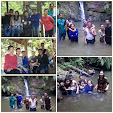Ambiguity
Ambiguity Definition
Ambiguity or fallacy of ambiguity is a word, phrase, or statement which contains more than one meaning.Ambiguous words or statements lead to vagueness and confusion, and shape the basis for instances of unintentional humor. For instance, it is ambiguous to say “I rode a black horse in red pajamas,” because it may lead us to think the horse was wearing red pajamas. The sentence becomes clear when it is restructured “Wearing red pajamas, I rode a black horse.”
Similarly, same words with different meanings can cause ambiguity e.g. “John took off his trousers by the bank.” It is funny if we confuse one meaning of “bank” which is a building, to another meaning, being “an edge of a river”. Context usually resolves any ambiguity in such cases.
Common Ambiguity Examples
Below are some common examples of ambiguity:- A good life depends on a liver – Liver may be an organ or simply a living person.
- Foreigners are hunting dogs – It is unclear whether dogs were being hunted or foreigners are being spoken of as dogs.
- Each of us saw her duck – It is not clear whether the word “duck” refers to an action of ducking or a duck that is a bird.
- The passerby helps dog bite victim – Is the passerby helping a dog bite someone? Or is he helping a person bitten by a dog? It’s not clear.
Examples of Ambiguity in Literature
Although ambiguity is considered a flaw in writing, many writers use this technique to allow readers to understand their works in a variety of ways, giving them depth and complexity. Let us analyze some ambiguity examples in literature.Example #1
Read the following excerpt from “The Catcher in the Rye” by J. D. Salinger:“I ran all the way to the main gate, and then I waited a second till I got my breath. I have no wind, if you want to know the truth. I’m quite a heavy smoker, for one thing—that is, I used to be. They made me cut it out. Another thing, I grew six and a half inches last year. That’s also how I practically got t.b. and came out here for all these goddam checkups and stuff. I’m pretty healthy though.”The words “they” and “here” used by the speaker are ambiguous. But the readers are allowed to presume from the context that “they” might be the professionals helping out Holden and “here” might be a rehabilitation center.
"Ambiguous" redirects here. For the film, see Ambiguous (film).
Sir John Tenniel's illustration of the Caterpillar for Lewis Carroll's Alice's Adventures in Wonderland
is noted for its ambiguous central figure, whose head can be viewed as
being a human male's face with a pointed nose and pointy chin or being
the head end of an actual caterpillar, with the first two right "true" legs visible.[1]
Ambiguity is a type of uncertainty of meaning in which several interpretations are plausible. It is thus an attribute of any idea or statement whose intended meaning cannot be definitively resolved according to a rule or process with a finite number of steps. (The ambi- part of the name reflects an idea of "two" as in two meanings.)
The concept of ambiguity is generally contrasted with vagueness. In ambiguity, specific and distinct interpretations are permitted (although some may not be immediately apparent), whereas with information that is vague, it is difficult to form any interpretation at the desired level of specificity.
Context may play a role in resolving ambiguity. For example, the same piece of information may be ambiguous in one context and unambiguous in another.









